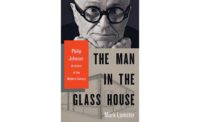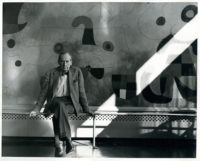Well timed for the Bauhaus centenary, this is the first biography of Walter Gropius (1883–1969) since Reginald Isaacs’s Gropius: An Illustrated Biography of the Creator of the Bauhaus was translated from German and abbreviated in 1991. Isaacs worked on his original tome with Gropius and his second wife, Ise. Now Fiona MacCarthy breaks some new ground, writing in a popular style but relying heavily on Isaacs’s classic. Her quest is to elaborate on the personal Gropius while leaving his inventive architecture and celebrated pedagogy in the background.
McCarthy, who has written biographies of William Morris and Lord Byron and was a design writer for The Guardian, met Gropius when she was a young reporter. She had expected he would be formal and stern, and was surprised by his charm and sexual charisma. The impression influences her portrait and contrasts with her terse descriptions of Gropius’s architectural practice and how he ran the Bauhaus like an opera impresario. Before meeting Ise, Gropius yearned for domesticity, and we can see why after reading bits of tormenting letters his notorious first wife, Alma Mahler, wrote to him while he served as a cavalry officer in World War I. The fanciful Alma dismissed her husband as a dullard and refused to easily share their child, Manon. Deeply troubled by his painful marriage and suffering battle nightmares, Gropius started the Bauhaus in Weimar and got a divorce.
The book divides a complicated life into three phases: German, English, and American. We see the tortured genius behind the “Knight in Armor” (Ise’s moniker), a shy, self-examining man of enormous self-control. Gropius administered the Bauhaus while confronting an intensely demanding faculty, lack of funds, and menacing right-wing government officials. In 1928, he left his post at the Bauhaus—by then established in Dessau—for Berlin.
In 1934, he and Ise slipped out of Nazi Germany and went to London, where he became head of design for the architecture firm Isokon, but building commissions were sparse. In 1937, Harvard’s dean of the Graduate School of Design, Joseph Hudnut, appointed him chair of architecture, and Gropius and Ise moved to the U.S. Here, he reignited the Bauhaus flame and designed, with his former student Marcel Breuer, a number of superb New England houses, including his own in Lincoln, Massachusetts. In 1945, Gropius agreed to become éminence grise for The Architects Collaborative (TAC) and helped the young founding partners make it one of the most prolific architecture firms of the time.
Unfortunately, the American context that McCarthy paints lacks a sense of place and some truly important people. Where’s Gropius’s great American friend and promoter, architect Lawrence Kocher? Gropius and Kocher met in 1929, when Kocher was RECORD’s managing editor and soon to be known as co-designer (with Albert Frey) of the Aluminaire House (1931). Gropius and Kocher talked of creating a Bauhaus in Long Island and had more interchange when Kocher later took over Black Mountain College in North Carolina.
More expertly covered by the British author are the London sojourn and Gropius’s late-in-life travels around the world, in the final chapter, to receive recognition and honor for his contributions to the Bauhaus and modern architecture. In spite of omissions, this volume is an engrossing read.







Post a comment to this article
Report Abusive Comment